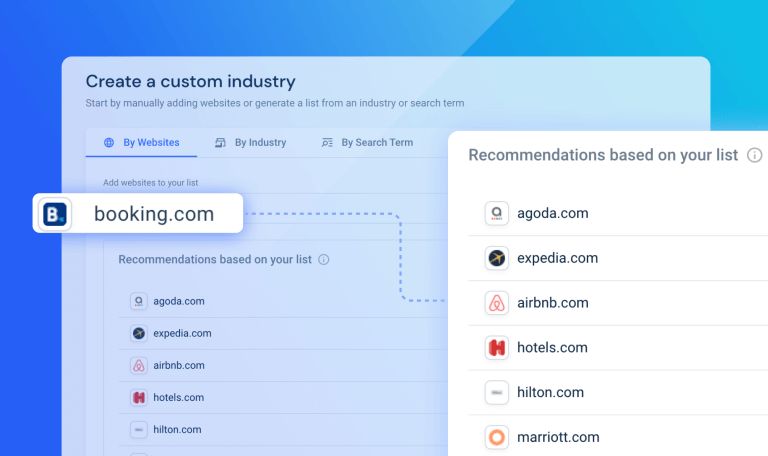Tapping Into New Markets Using Market And Competitor Insights

Making data-led decisions on market expansion has never been more important. The disruption brought about by the coronavirus pandemic hasn’t been evenly distributed; some countries, even within the narrow confines of Western Europe, have seen far greater economic impact than others. Similarly, brands have reacted in different ways, from pausing all advertising to dialing up their spends aggressively. Those differences are further compounded across categories, with slow-to-evolve companies struggling to keep up in more digital-than-ever landscapes.
A framework for international growth: Explore, launch, expand
At Croud, global is what we do best. We work with some of the world’s biggest multinationals, steering their decision-making on international growth using a tried-and-tested framework.
Using this approach, we help our clients to spot opportunities, move quickly to exploit them, and double down on success. It works in three phases:
- The Explore phase is how we ensure that all market expansion is powered by highly relevant, focused insight.
- In Launch, the market rollout is governed by an established process for growth: land, validate, and course-correct as performance data becomes available.
- Expand is how we turn a nascent market into a mature one. That process involves optimizing the media mix and embedding a constant, rigorous approach to test and learn.
While market and competitor insight is crucial throughout the market expansion process, it is particularly important during Explore. Here, we’re looking to spot market conditions that might impact our clients’ media performance. Specifically, that means understanding the size of the market, the depth of competition within it, and the landscape within the media channels we’re planning to launch with. For all of this analysis, Similarweb is key.
Understanding the size of the market
As a first step, we size the category that our client operates in, showing growth over time and the share of key competitors. The market research tools in Similarweb – and the ability to create custom categories, in particular – is a powerful tool in building that view of the market. Without being limited by the number of brands you can select (the tool allows for up to 100) we’re able to build an in-depth window into the categories our clients operate in: from the biggest rivals, all the way down to the smallest, most agile new entrants. We match the data from Similarweb with other signals, including localized keyword research, to build bespoke market & competitor dashboards for our clients, giving them an up-to-date view of market conditions.
Sometimes, the sites we use for custom categorization will be obvious. The biggest players will already be known or will jump out from search results or qualitative research. Smaller, rising brands will be harder to spot – and that’s where we can use another Similarweb feature to improve visibility and help our clients spot new market entrants. The Audience Interests feature shows how users overlap between sites, which allows us to spot sites that our clients might be sharing their audience with – however small. This functionality is essential for competitor discovery in new markets. In the example below, we can see how visitors to Sephora in Germany overlap with other cosmetics retailers. Because douglas.de doesn’t operate in the UK, it would be easy to miss them out of any category sizing without a detailed audience overlap analysis. The Global Rank metric also means we can start tiering competitors by size, creating categories, and sub-categories if required.
Exploring the competitive landscape
As we delve deeper into the market, we want to start looking at trends in how each site in the competitive set is acquiring those users. To do that, we can return to our Web Category reporting to view channel traffic trended over time. That can help to pinpoint periods of more aggressive advertising, for example, or when competitors typically receive large amounts of email traffic.
It can be more useful, however, to start to group channels, and to build a more holistic view of how competitors are acquiring users. In the example below, we can see the relationship between organic traffic channels (direct, referral, organic search) and what I have labeled as ‘marketing’ (paid search, display, email, social). By doing this, we’re able to spot those sites that are more reliant on a combination of paid media & email, versus those that tend to have a strong base of organic traffic.
In this example, Lookfantastic’s strategy in Germany is clearly heavily reliant on marketing channels, with paid search driving 29% of their website traffic.
Using Keyword Analysis in Similarweb, we can see that Look Fantastic is competing with Douglas for many of the highest volume skincare terms. By importing search terms from localized keyword research, we can create a much broader view of the German skincare market, including average category costs; by comparing that against data from other countries, we can build an international category cost index, highlighting opportunities for expansion. Data on category size and cost gives us what we need to forecast paid search performance, helping to lay the foundations for the Launch stage of our framework. Depending on the available capacity within search, we can then assess the viability of launching in channels like display and paid social.
All of this helps us to build a complete picture of the opportunities that exist within different markets. By using Similarweb data in combination with other signals, we can help our clients make smarter decisions around market expansion, drive stronger performance, and accelerate growth.
Get ahead of game-changing consumer trends
Contact us to set up a call with a market research specialist











